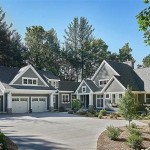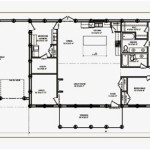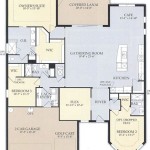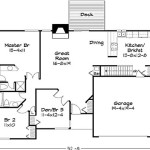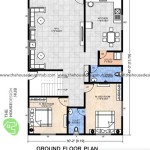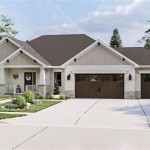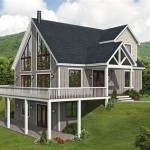Classic Colonial Home Floor Plans: A Timeless Appeal
Colonial-style homes are renowned for their timeless elegance, symmetrical lines, and airy interiors. Their classic floor plans have stood the test of time, offering a harmonious blend of functionality and aesthetic appeal. This article explores the quintessential features and variations of classic colonial home floor plans, providing insights into their enduring popularity.
Symmetrical Façades and Centered Entryways
A defining characteristic of colonial floor plans is their symmetrical façades. The front door, usually flanked by windows, is typically centered, creating a sense of balance and formality. This symmetry extends throughout the exterior, with windows and doors arranged in a regular pattern.
Central Staircase and Hallway
Inside, a central staircase is often the focal point of colonial homes. It provides access to the upper floors and divides the house into separate wings. A wide hallway runs perpendicular to the staircase, connecting the various rooms. This central hallway acts as a primary circulation zone, ensuring easy movement throughout the home.
Formal Living and Dining Rooms
Classic colonial floor plans typically feature formal living and dining rooms. These rooms are spacious and well-proportioned, with high ceilings and large windows. The living room often has a fireplace, creating a cozy and inviting atmosphere. The dining room is designed to accommodate large gatherings, with ample space for a dining table and chairs.
Multi-Purpose Rooms
In addition to formal living and dining rooms, many colonial floor plans include multi-purpose rooms. These rooms can be used as libraries, studies, or home offices. They often feature built-in bookshelves or cabinetry, providing both functionality and decorative charm.
Varied Kitchen Designs
Kitchen designs in colonial homes have evolved over time. In older homes, kitchens were typically smaller and less integrated with the rest of the house. In more modern iterations, kitchens have become larger and more open, featuring modern appliances and amenities. However, the classic colonial touch is often retained through features such as beamed ceilings and exposed brick walls.
Multiple Bedrooms and Bathrooms
Colonial homes typically have multiple bedrooms and bathrooms. The master suite is often located on the second floor and features a private bathroom and walk-in closet. Additional bedrooms are often found on the second or third floors, with shared bathrooms. Each room is designed to be comfortable and well-proportioned, ensuring privacy and functionality.
Garages and Porches
Many colonial homes include attached or detached garages. These offer convenience and protect vehicles from the elements. Additionally, many colonial homes feature covered porches or verandas. These outdoor living spaces provide shade and a relaxing spot to enjoy the outdoors.
Conclusion
Classic colonial home floor plans continue to inspire and captivate homeowners with their timeless elegance, functionality, and symmetrical beauty. Their central staircases, formal living and dining rooms, multi-purpose spaces, and varied kitchen designs create a harmonious and inviting living environment. Whether opting for a traditional or more modern interpretation, the enduring appeal of colonial floor plans lies in their ability to blend classic charm with contemporary comfort.

Classic Colonial Home Plan 32563wp Architectural Designs House Plans

Colonial Manor House Plans For A Traditional 4 Bedroom Home

Colonial House Plans Dutch Modern More Monster

1923 Colonial House Plans Vintage

1925 Colonial Revival Classic Home Two Story Bowes Co Hinsdale Il House Plans Beach Mediterranean

House Plan 59952 Traditional Style With 1870 Sq Ft 3 Bed 2 Ba

Colonial Manor House Plans For A Traditional 4 Bedroom Home

Classic Colonial 3992st Architectural Designs House Plans

Morgan House Plan Suggestions Building With Assurance Colonial Plans Vintage

Early American House Floor Plans Historic Homes Brand

